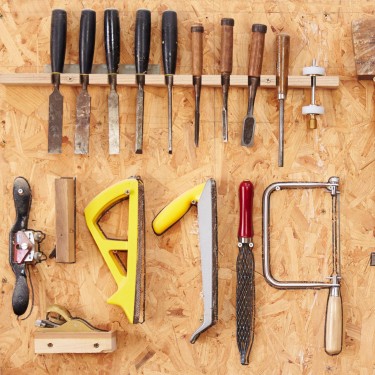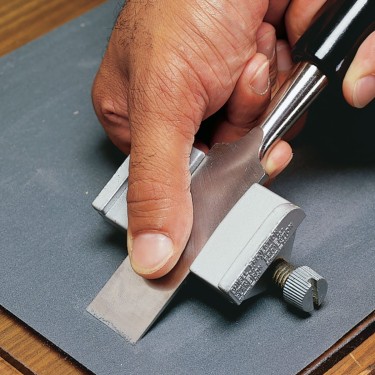Woodworking joints can be strong and beautiful at the same time. Learn about these classic types of joinery used by woodworkers worldwide.
Every editorial product is independently selected, though we may be compensated or receive an affiliate commission if you buy something through our links. Ratings and prices are accurate and items are in stock as of time of publication.
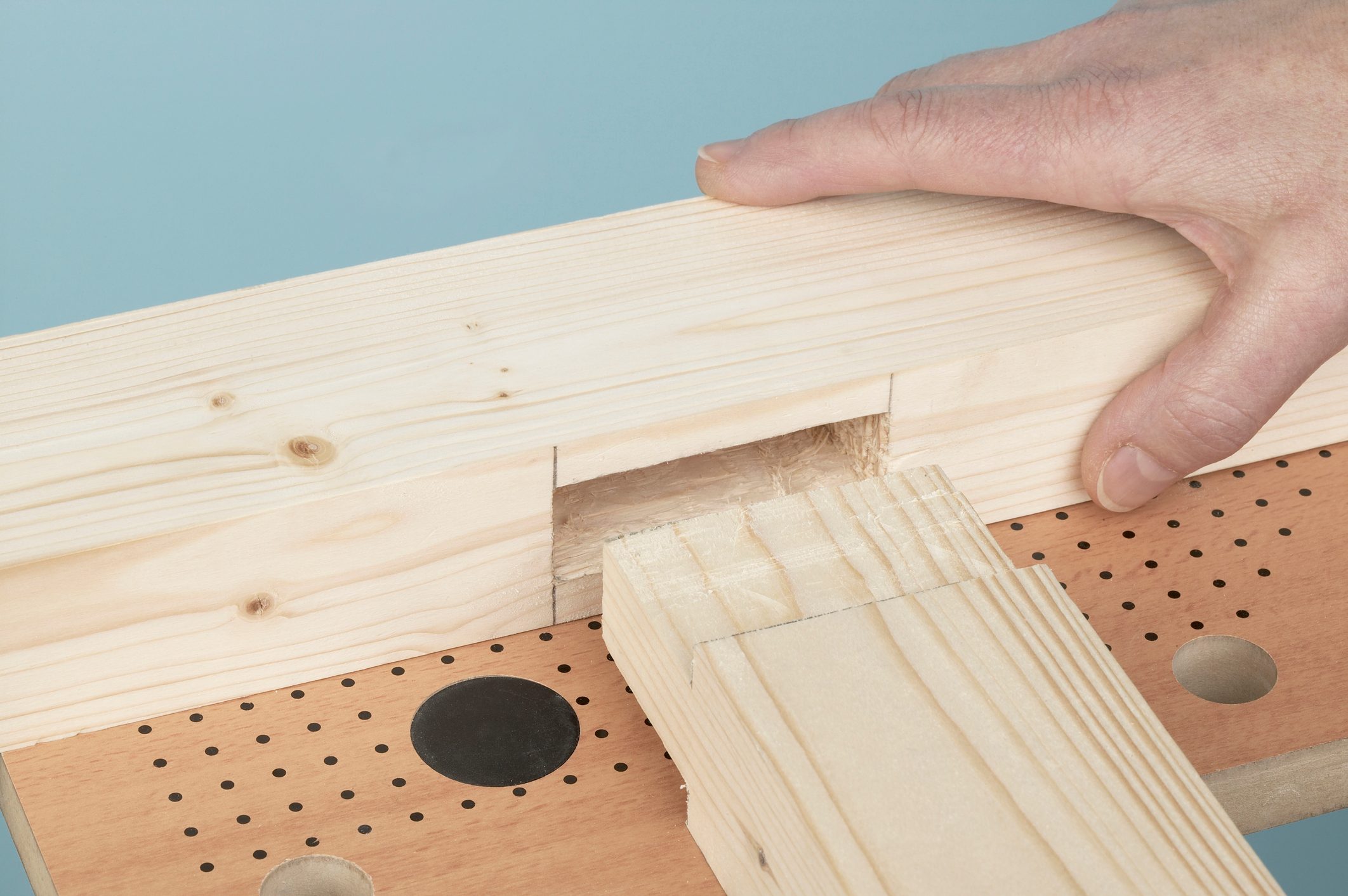
Mortise-and-Tenon Joint
This is a general term — the mortise describes a pocket cut into a piece of wood, and the tenon is a corresponding positive part on the end of another piece of wood that fits into the mortise.
The tenon shoulders, often cut at square 90-degree angles, seat against the face where the mortise is cut, providing strength and structure while preventing tipping or racking out of square.
There are dozens of variations, and the mortise-and-tenon joint takes many forms. It can be rectangular, square, pinned, wedged, haunched, loose and even cylindrical.
Commercially available tools like this Leigh FMT Frame Mortise and Tenon system use a router to aid in cutting both parts of this joint. Jigs like this one from WoodRiver are available for the table saw to ensure consistent tenons when making multiples.
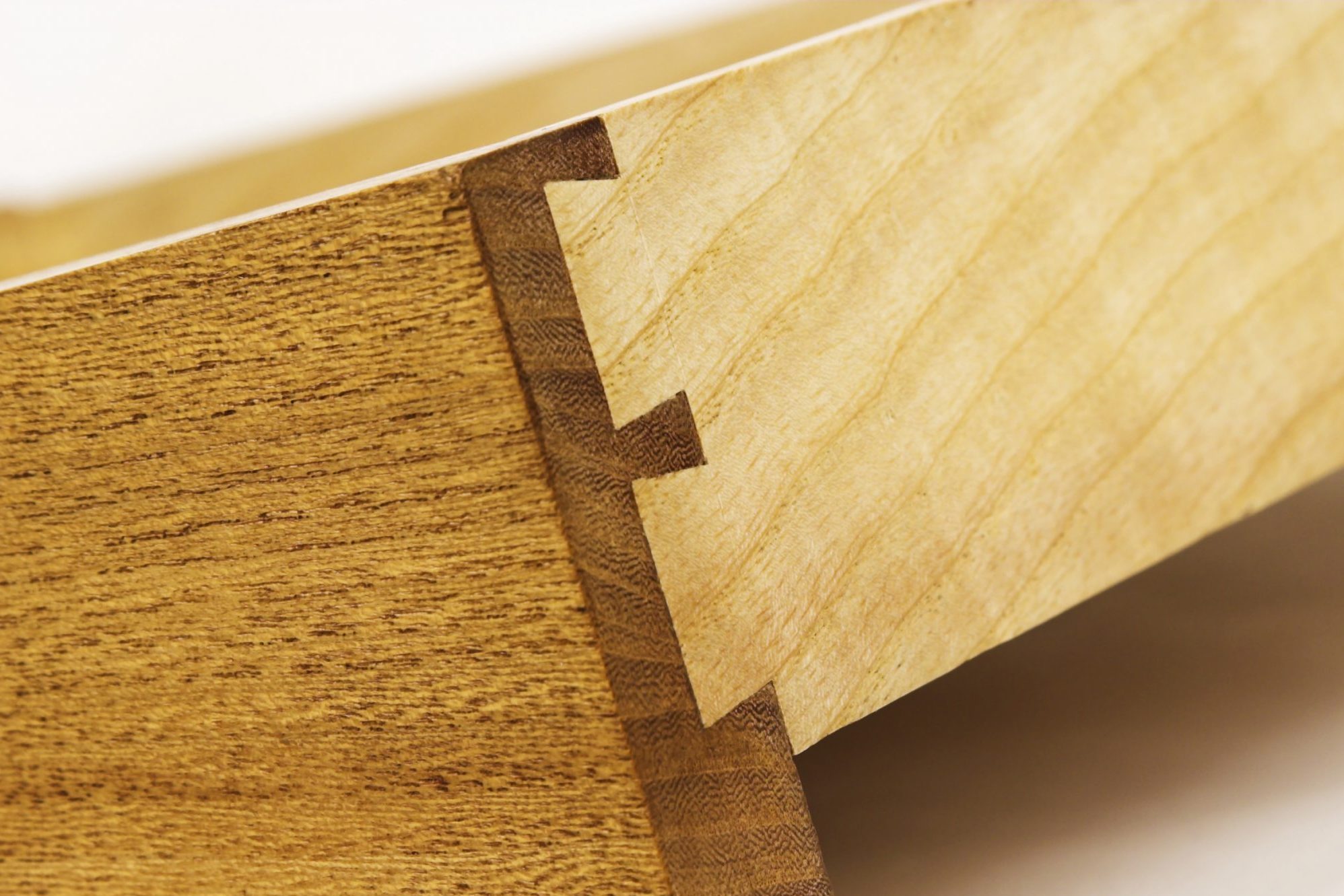
Dovetail Joint
Found frequently on drawers, the dovetail is the Holy Grail of woodworking joints. The wedge-shaped pins and tails are cut on mating pieces which resist being pulled apart.
The dovetail is beautiful and strong, but among the most difficult joints to execute. Dovetails can be hand cut, using a combination of careful saw and chisel work, or cut with an array of available router templates, ensuring proper alignment of the pins and tails. In either case, careful layout and patient attention to detail are essential.
While half blind or hidden dovetails do exist, most dovetails are left exposed. That’s because the joint is beautiful and proves the maker is a fastidious craftsperson.
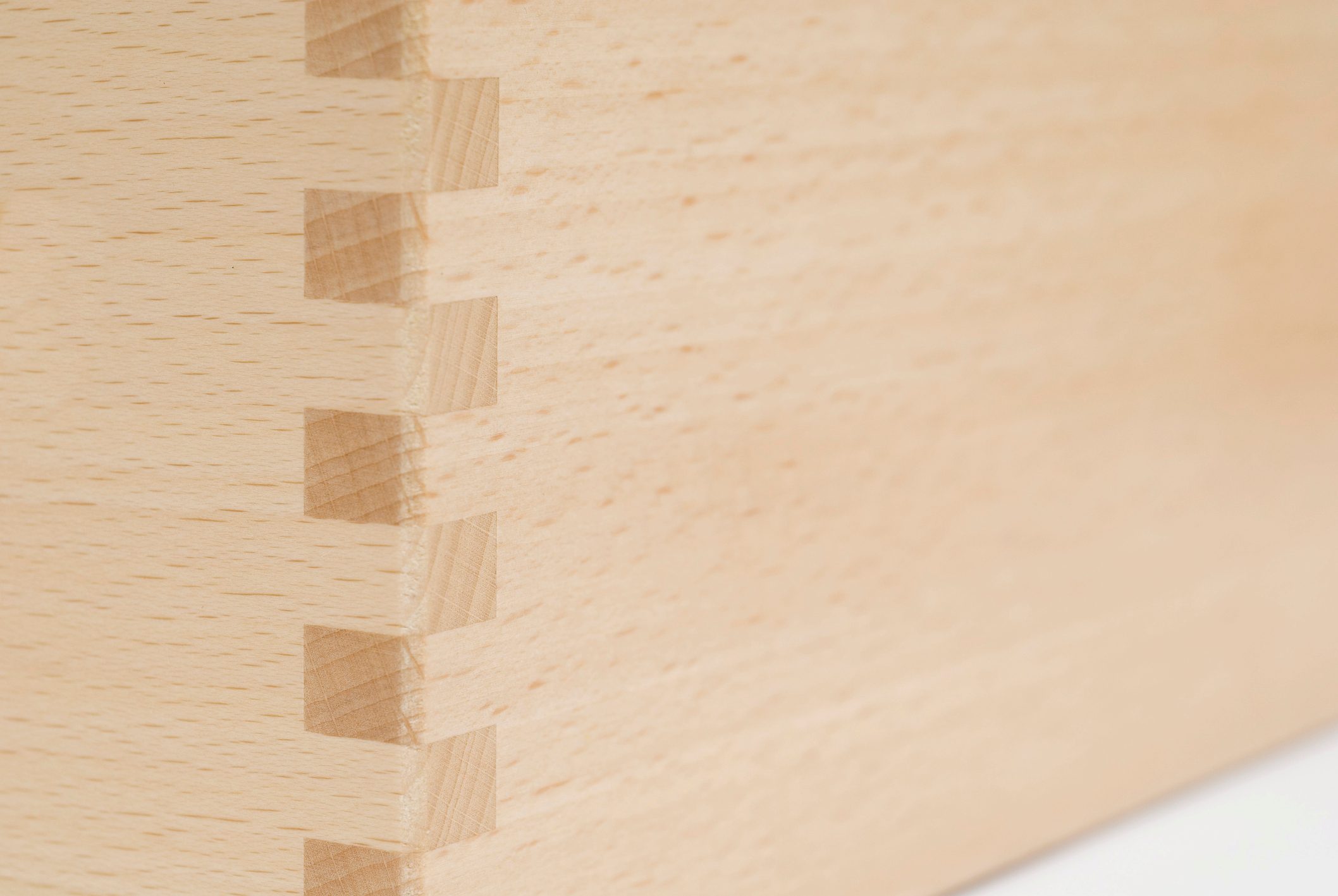
Box Joint
The box joint is considered the fast, strong younger sibling of the dovetail. To picture a box joint, also known as a finger joint, imagine two hands with straight fingers interwoven. While box and dovetail joints can be used interchangeably for the same structural function, the box joint is less extravagant and perhaps easier to execute.
Woodworkers utilize router templates or a stacked dado blade on the table saw to make this clean joint. Once set up, it can be made efficiently.
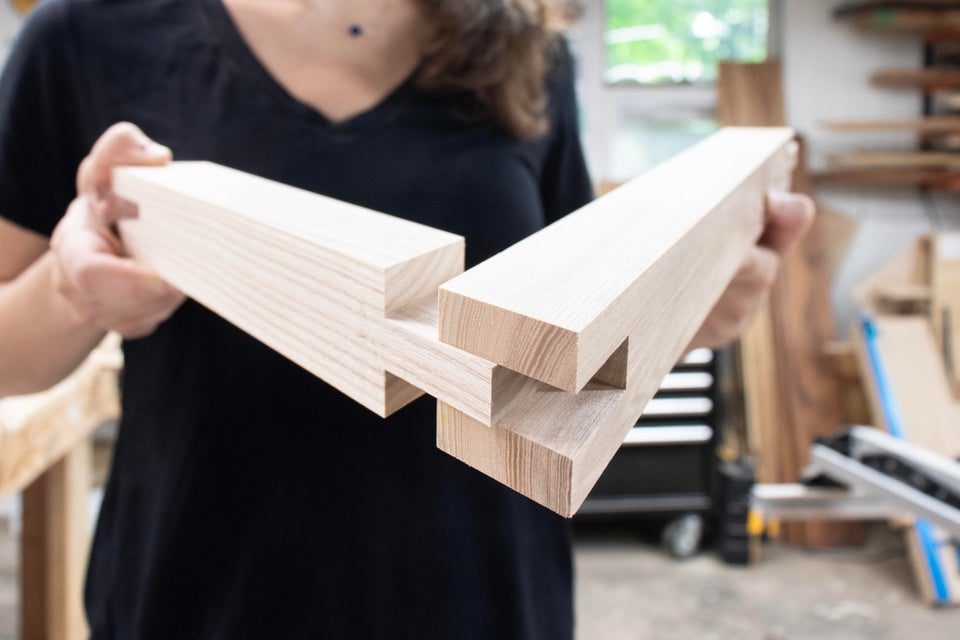
Bridle Joint
Similar to a mortise-and-tenon joint, the bridle joint is cut to the full width of the tenon. This joint is often used in larger joining scenarios, like work benches with massive cross members, or in barn door construction. Wordworkers employ the big, beautiful bridle joint on large pieces because of the large glue surface area and relatively simple execution.
Most often used on corners, the bridle joint may be combined with a T-bridle joint where the ends of one piece join to the middle of the board. This joint is especially beautiful because the face and end grain contrast, calling attention to the craftsmanship.
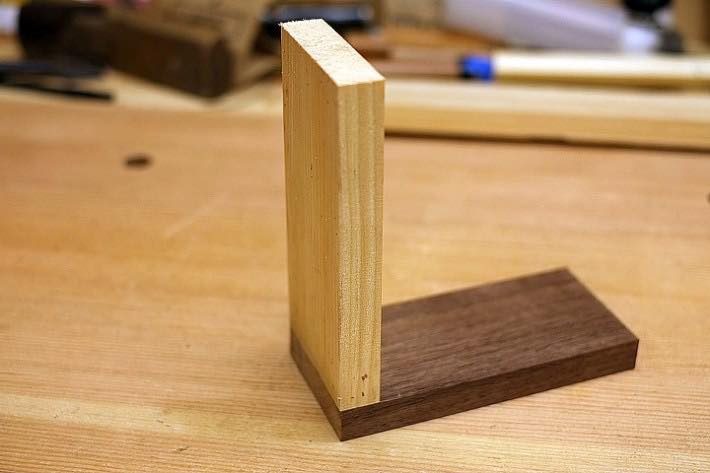
Butt Joint
This simple joint forms when one piece butts or bumps end-grain directly into the long-grain face of another at 90 degrees. It’s easy to execute because you don’t need to account for extra length for tenons or corresponding mortises.
However, simple butt joints are weak and should be reinforced. They can be doweled or screwed, but glue alone isn’t sufficient. The end grain absorbs glue, starving the joint and weakening it. What’s more, the board butting into the long grain swells and shrinks, further weakening the glue adhesion.
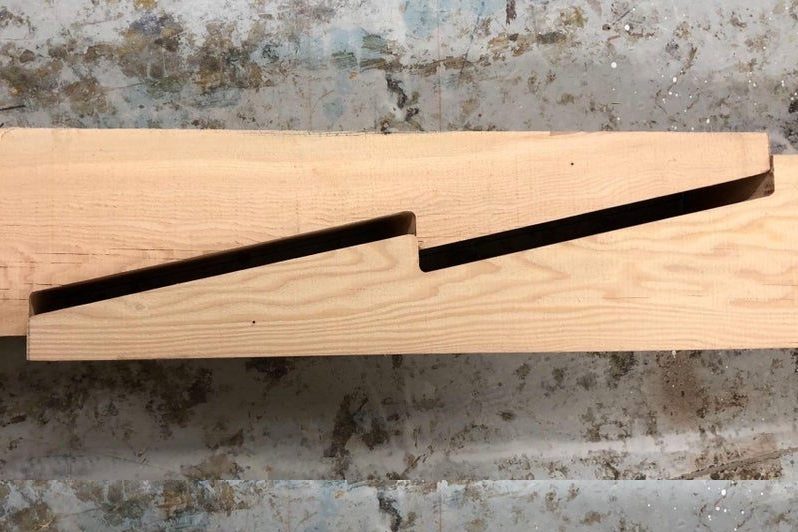
Scarf Joint
A less-common joint, but still worth knowing. When you need longer pieces of wood than are available, the scarf joint, AKA extender joint, saves the day.
Think of the baseboards in your house. Rather than butt-jointing these pieces together (see above), it’s better to create a 45-degree angle on the end of a board along the height where the two pieces meet. Then the transition between the parts becomes invisible. You’ll also see this joint in boat and canoe making.
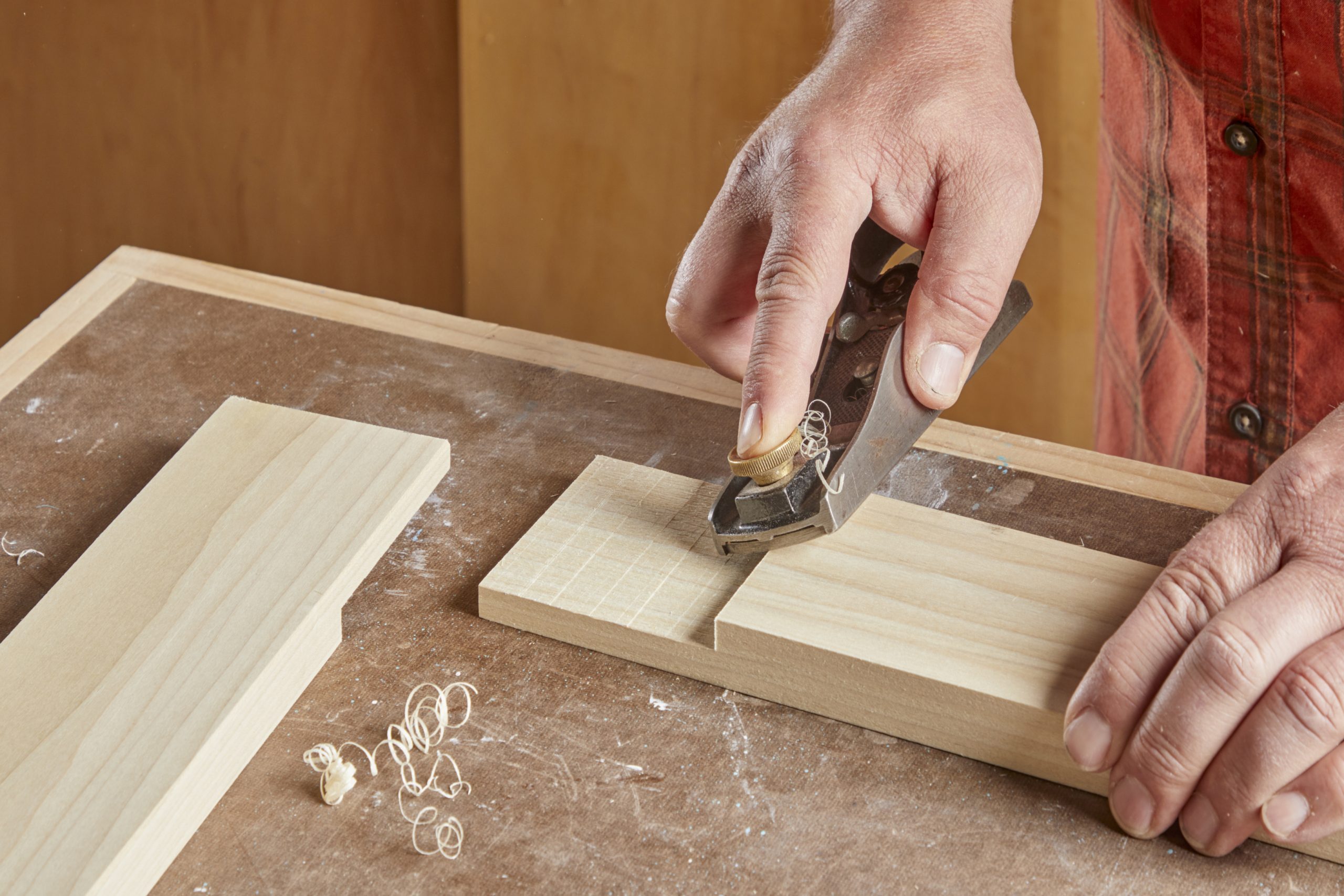
Half-Lap Joint
Each side of this joint (essentially a butt joint with a shoulder) only requires two cuts and a little clean-up with the chisel. While it isn’t as strong as some other joints, the half-lap has significant glue surfaces, and a shoulder to help square frames.
This simple-to-execute joint provides decoration and structure. It’s often cross-pinned with dowels through the face for additional structure.
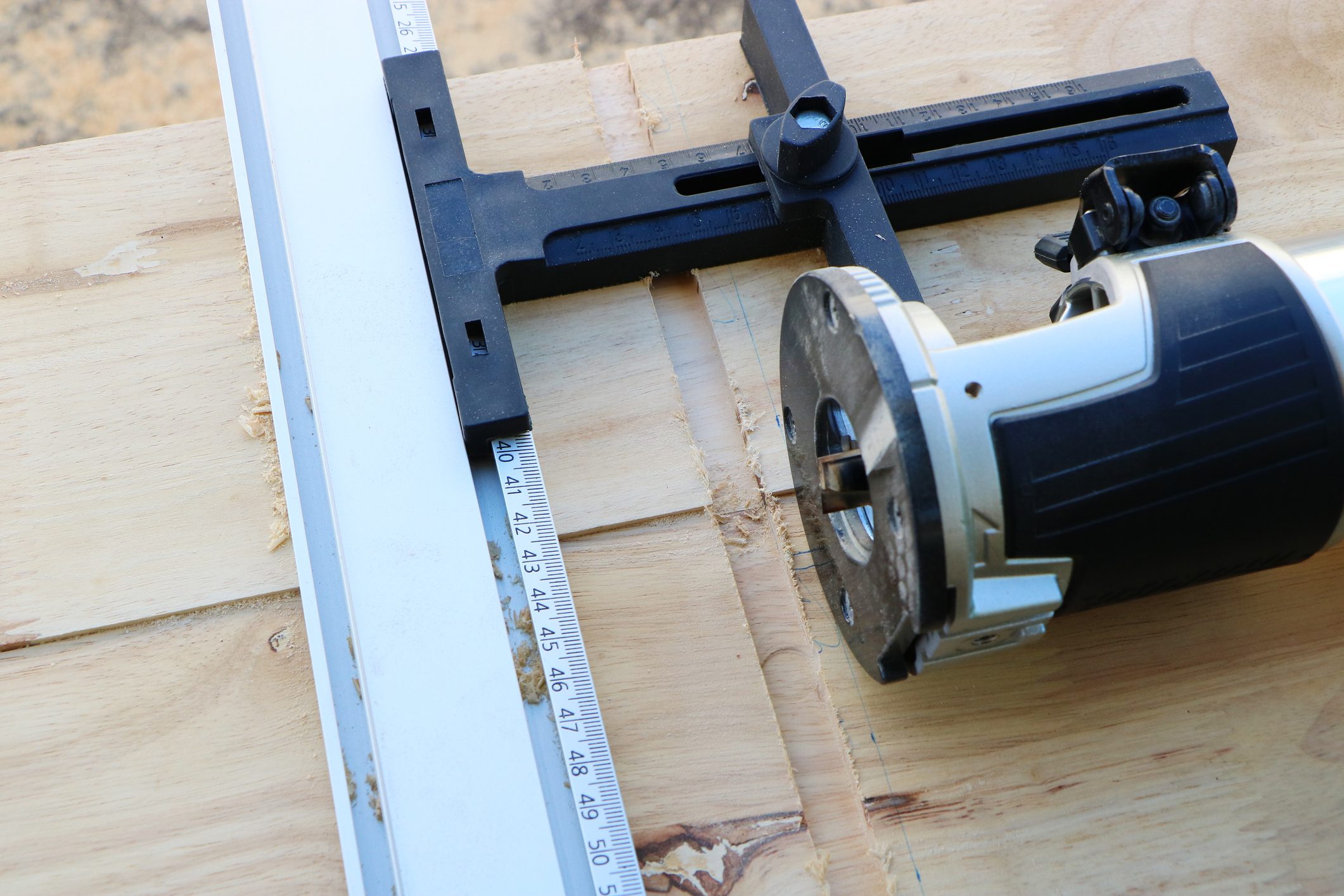
Dado Joint
A simple construction joint often found in cabinet and bookcase construction, the dado is a slot or trench cut all the way across the grain to hold another piece of wood.
Used in solid wood and plywood construction, dadoes are cut with a router, or with a dado blade in the table saw. It’s a specific type of blade arrangement; multiple blades stacked together create a wide cut.
The dado is not only structural, but also an easy way to position parts of a shelf or cabinet. A stopped dado joint provides an uninterrupted edge and the convenience and structure of the conventional joint.
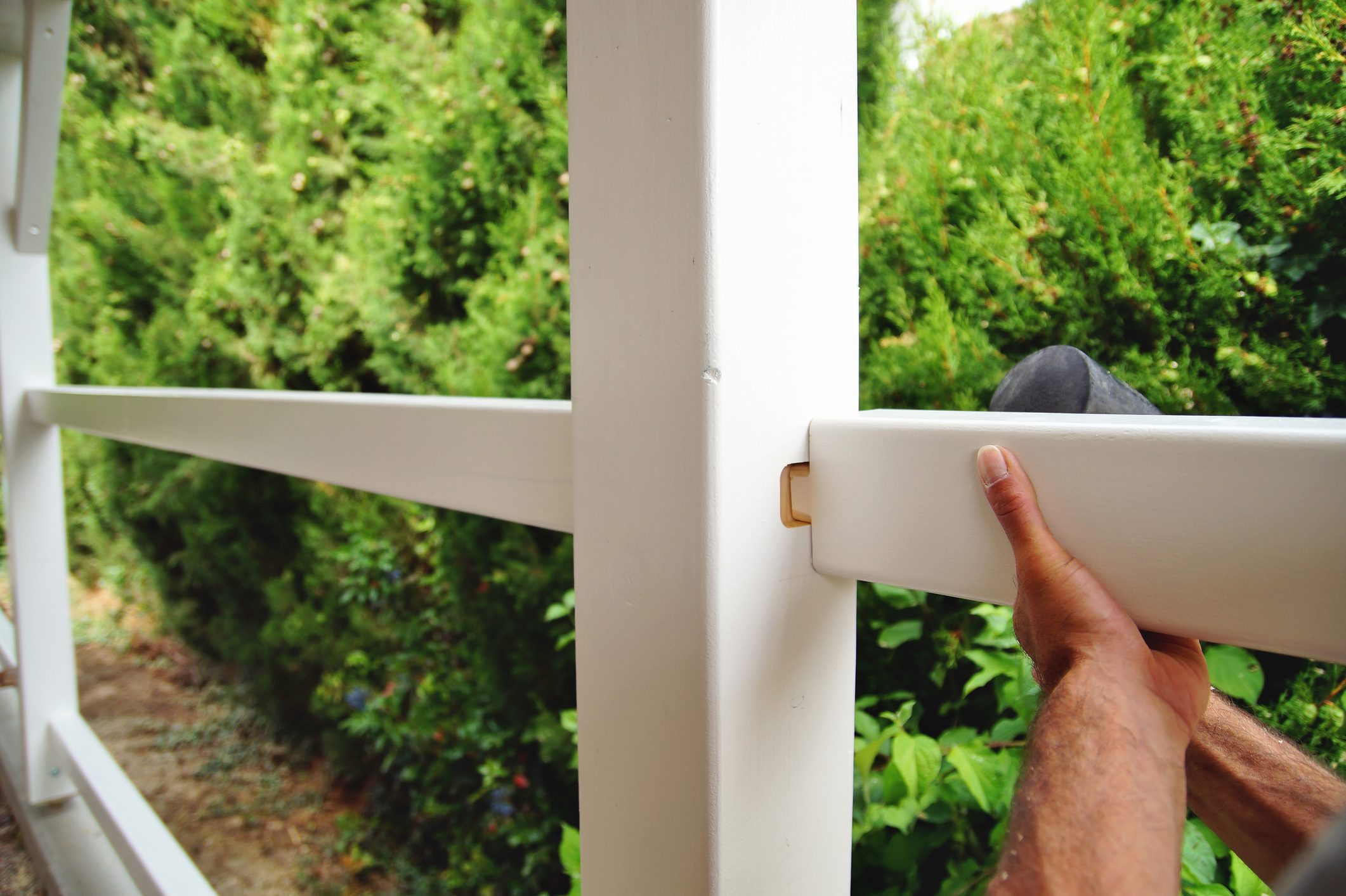
Rabbet Joint
Similar to dadoes, rabbets only show up on the edge of a piece of wood. It’s the lip on alternating edges of shiplap for the back of cabinets, or the inner lip which holds a pane of glass in a frame.
Sometimes rabbets are used to fit into a corresponding dado. Rabbet joints aren’t inherently strong and are often reinforced with screws, nails or dowels.
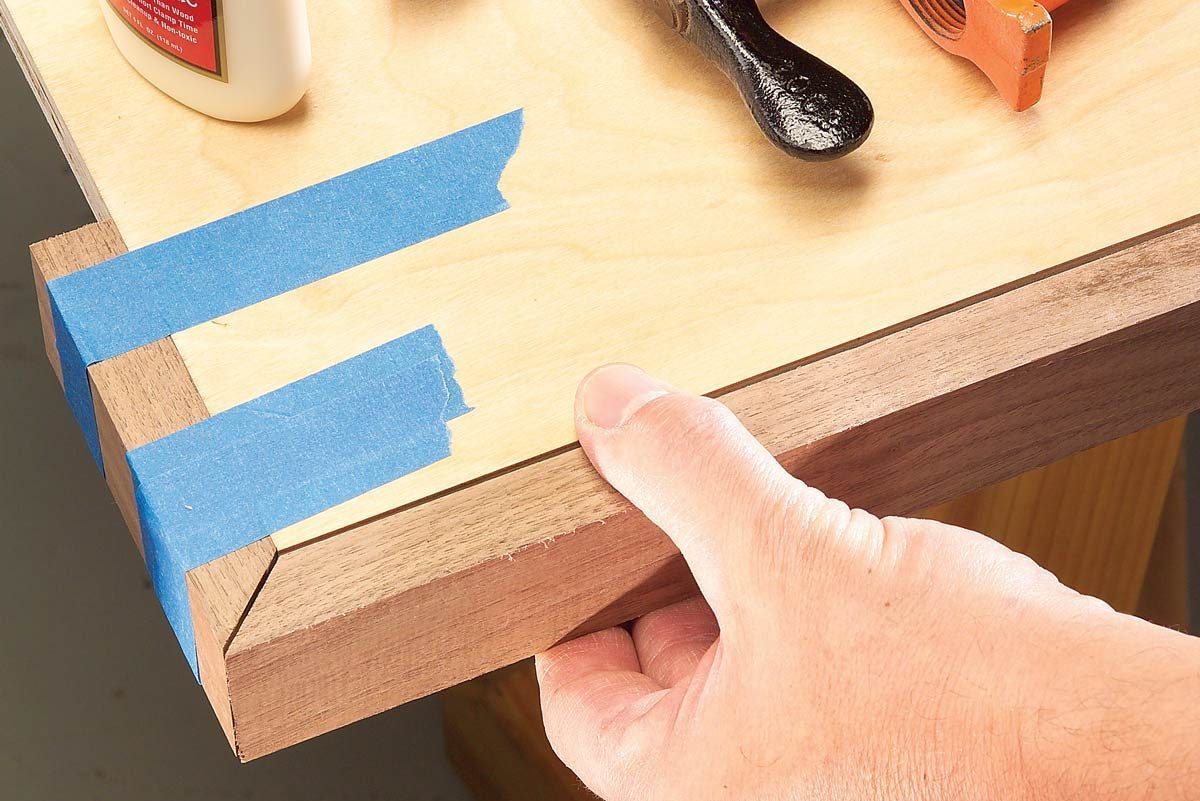
Miter Joint/Picture-Frame Joint
Miter joints, AKA picture frame joints, are almost always 45-degree cuts meeting on 90-degree corners. When cleanly executed, this beautiful joint allows the wood grain to visually flow around a box or frame.
While this joint has given the miter saw its name, it can be a challenge to perform with untuned tools. If a jig or tool set to make 45-degree cuts is off by even 1/2-degree, this inaccuracy compounds over the eight joints, leaving unsightly gaps. It’s imperative to test cut and align tools before making clean miters.
Also, the end grain on the joints means glue usually isn’t enough. Reinforcing decorative splines are added cross grain for beauty and structural integrity.

